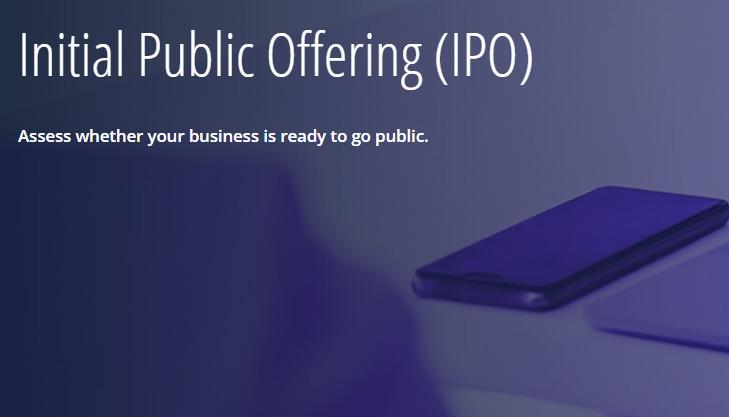Equity market update and IPO compass

Capital Markets Team —
October 2025


Capital Markets Team —
October 2025
European IPO markets have regained momentum post-summer. Two sizeable IPOs have successfully priced, with more expected to start trading in October. Backed by a strong pipeline, the recovery in European IPO markets looks set to gain further traction.

Ralf Pfennig Partner Head of Deal & Capital Markets Services
Two private equity backed IPOs are spearheading the European post-summer window
Swiss Marketplace Group, backed by General Atlantic, was the first sizeable European IPO of the autumn season, debuting on SIX Swiss Exchange on 19 September. A week later, Nordic Capital backed NOBA Bank followed with its Stockholm listing.
The Fed cut its key interest rate for the first time this year, by 25 basis points to a range of 4.00–4.25%, citing risks to employment Inflation was described as only “somewhat elevated”, signaling a shift toward labor market support.
Note: 1) See slide 7 for index definitions.
European stocks rose modestly in September, with the STOXX Europe 600 closing just 1.2% below its all-time high, while German indices stayed almost flat US markets continued to outperform, with S&P 500 up 3.5% in September.
Rising downside risks to the US labor market have led markets to price in up to two additional rate cuts for the remainder of this year, ahead of the Fed’s October and December monetary policy meetings.

whether your business is ready to go
Following the traditionally quiet month of August, both the ECB and the Fed held monetary policy meetings again in September.
After its meeting on 11 September, the ECB left the deposit rate unchanged at 2.00% for the second consecutive time. With inflation and growth largely in line with its previous projections, the central bank saw no immediate need for further adjustments – consistent with its longstanding approach of maintaining policy flexibility.
Further, the HCOB Eurozone Manufacturing PMI fell back into contraction territory in September, revising the first improvement seen in more than three years during August – however with an only marginal overall decline.
The Fed, which operates under a dual mandate of price stability and full employment, is facing conflicting signals: persistent inflation alongside signs of a softening labor market. Following its 17 September meeting, the central bank cut its key interest rate for the first time this year – by 25bps to 4.00-4.25% –citing rising downside risks to employment. Inflation was described as only “somewhat elevated”, underscoring the Fed’s shift in focus toward supporting the labor market over concerns about inflationary pressures. Markets are currently pricing in up to two additional rate cuts before year-end.
Despite September’s historical reputation as the weakest month of the year for equities, US stock markets continued their upward trajectory, with the S&P 500 and Nasdaq hitting new record highs, while European markets also closed mostly higher.
The STOXX Europe 600 posted a 1.5% month-over-month gain, just 1.2% below its all-time high from March. The FTSE 100 rose by 1.8% in September, setting a new all-time high after already achieving one last month. Germany’s DAX (-0.1%) and MDAX (-0.1%) ended the month nearly flat. Markets found support in resilient Eurozone economies, public infrastructure investment plans, strong corporate earnings and record levels of share buybacks. Positive sentiment from US markets also contributed. However, gains were limited by a strong euro putting further pressure on exporters, mixed economic data, and political uncertainties – particularly in France.
The S&P 500 advanced 3.5% while Nasdaq gained 5.6% in September, marking their fifth and sixth consecutive monthly increases, respectively. This momentum was driven by the Fed’s September rate cut and optimism around further monetary easing, directionally positive economic data, strong earnings and continued AI momentum . Nonetheless, concerns over labour market softness and persistent inflation weighed on sentiment
Global investors also monitored the tariff landscape following new US tariff headlines, as well as the US government shutdown, which raised concerns about potential delays in the release of key economic data.
Volatility remained mainly subdued throughout the month, with the VIX at an equity capital market activity friendly level of 16.3 by month-end – well below the 20-point threshold typically seen as the dividing line between stable and stressed market conditions.
Source FactSet. KPMG, Germany, 2025.
Following the conclusion of the summer break, European equity capital markets have regained momentum, as several issuers are taking advantage of the anticipated post-summer issuance window to launch or prepare their IPOs. In the US, IPO activity, which remained unusually high throughout August, continued at pace into September.
In Europe, the new IPO window was led by two major, private equity backed listings. Swiss Marketplace Group, an online classifieds business backed by General Atlantic, became the first sizeable European IPO of the postsummer window, debuting on the SIX Swiss Exchange on 19 September. This was followed by Swedish NOBA Bank, backed by Nordic Capital, which listed on Nasdaq Stockholm on 26 September. Additionally, Continental’s spin-off Aumovio commenced independent trading on the Frankfurt Stock Exchange on 18 September. Further, European1 follow-on activity remained robust in what has been the most active first three quarters since 2021 in terms of total volume raised.
In the US, Swedish Klarna Group kicked off the autumn season with its listing on the New York Stock Exchange on 9 September, marking the first sizeable IPO of the month. Since then, 12 more sizeable IPOs have been priced, with Fermi being the last, announcing its completion on 30 September, with trading in both New York and London expected to begin at the start of October. Overall, the US IPO market saw a sharp acceleration in the third quarter, with total volume raised reaching levels not seen in any single quarter since the end of the 2021 IPO boom – marking a 148% increase compared to the median quarterly volume since then.
While IPO activity in the US continues to outpace that of Europe, both regions are exhibiting signs of renewed investor confidence.
Source: Dealogic, KPMG, Germany, 2025.
European IPO activity picked up following the end of the summer break. Swiss Marketplace Group was the first sizeable post-summer IPO, followed by Swedish NOBA Bank. Additionally, Continental’s spin-off, Aumovio, made its market debut. Currently, several companies have released their Intention to Float (ITF) and are now live in the market, including The Beauty Tech Group (UK), Verisure (SE), Ottobock (DE), and Posti Group (FI), all expected to commence trading in the first half of October.
Europe’s IPO market has seen a notable resurgence in recent weeks, with a broad mix of companies either launching or preparing to list across the region’s exchanges. Companies reportedly preparing for a listing include ThyssenKrupp’s Marine Systems division via spin-off (DE), Vincorion (DE), TK Elevator (DE), Spineart (CH), and Doktor se (SE) While some may proceed with listings this year, the broader pipeline is largely geared toward 2026, with most candidates currently preparing for an IPO in the next year.
Note: 1) Considering transactions with deal value >€150m excl. Greenshoe, excl. SPACs, 2) At IPO, 3) Excl. Greenshoe, 4) Compared to issue price at IPO as of 30 September, 2025 Source: Dealogic.
Note: : Increase/ flat/ decrease in indicating factor; : positive/ neutral/ negative impact on IPO activity Source: Dealogic, S&P Global, FactSet, Refinitiv, KPMG, Germany, 2025.
Definitions and methodologies of referenced survey data indices
The PMI is an economic indicator that measures the health of the manufacturing and service sectors through surveys of purchasing managers, focusing on factors like new orders, production and employment. The PMI ranges from 0 to 100, with a value above 50 indicating expansion and below 50 indicating contraction. Hamburg Commercial Bank (HCOB) and S&P Global collaborated to calculate the PMI in the Eurozone (Germany, France, Italy, Spain, the Netherlands, Austria, Ireland and Greece). The PMI is based on a representative sample of around 5,000 industrial and service companies.
The ESI reflects overall economic confidence, particularly in the European Union, based on surveys of various sectors such as industry, services and consumers Expressed as an index with a long-term mean of 100, an ESI above 100 indicates optimism and stronger confidence, while a value below 100 suggests pessimism and weaker confidence. The ESI helps gauge economic trends and outlooks.
The CCI is the arithmetic average of the balances (in percentage points) of the answers to the questions on the past and expected financial situation of households, the expected general economic situation and the intentions to make major purchases over the next 12 months. It is used as an economic indicator to gauge consumer spending behaviour. Values above zero percent (percentage points) indicate positive views of the economy, whereas values below zero percent (percentage points) indicate negative views, and a value of zero reflects an equal balance of positive and negative views.
Source: European Commission, S&P Global, MSCI.


Ralf Pfennig Partner Head of Deal & Capital Markets Services
T +49 221 2073 5801
M +49 173 576 4695
ralfpfennig@kpmg.com

Till Karrer Partner Head of Debt Advisory
T +49 69 9587 4607
M +49 160 97891143
tkarrer@kpmg.com
Susanne Gatzweiler
Senior Manager
T +49 221 2073 1159
M +49 151 567 49271
sgatzweiler@kpmg.com

Amin Qazi Manager
T +49 69 9587 2395


Philip Evermann
T +49 221 2073 6559
M +49 151 414 06208 pevermann@kpmg.com

Florian Lohse Manager
T +49 89 9282 4818
M +49 151 556 27757
flohse@kpmg.com
M +49 160 948 36734 aminqazi1@kpmg.com 8
